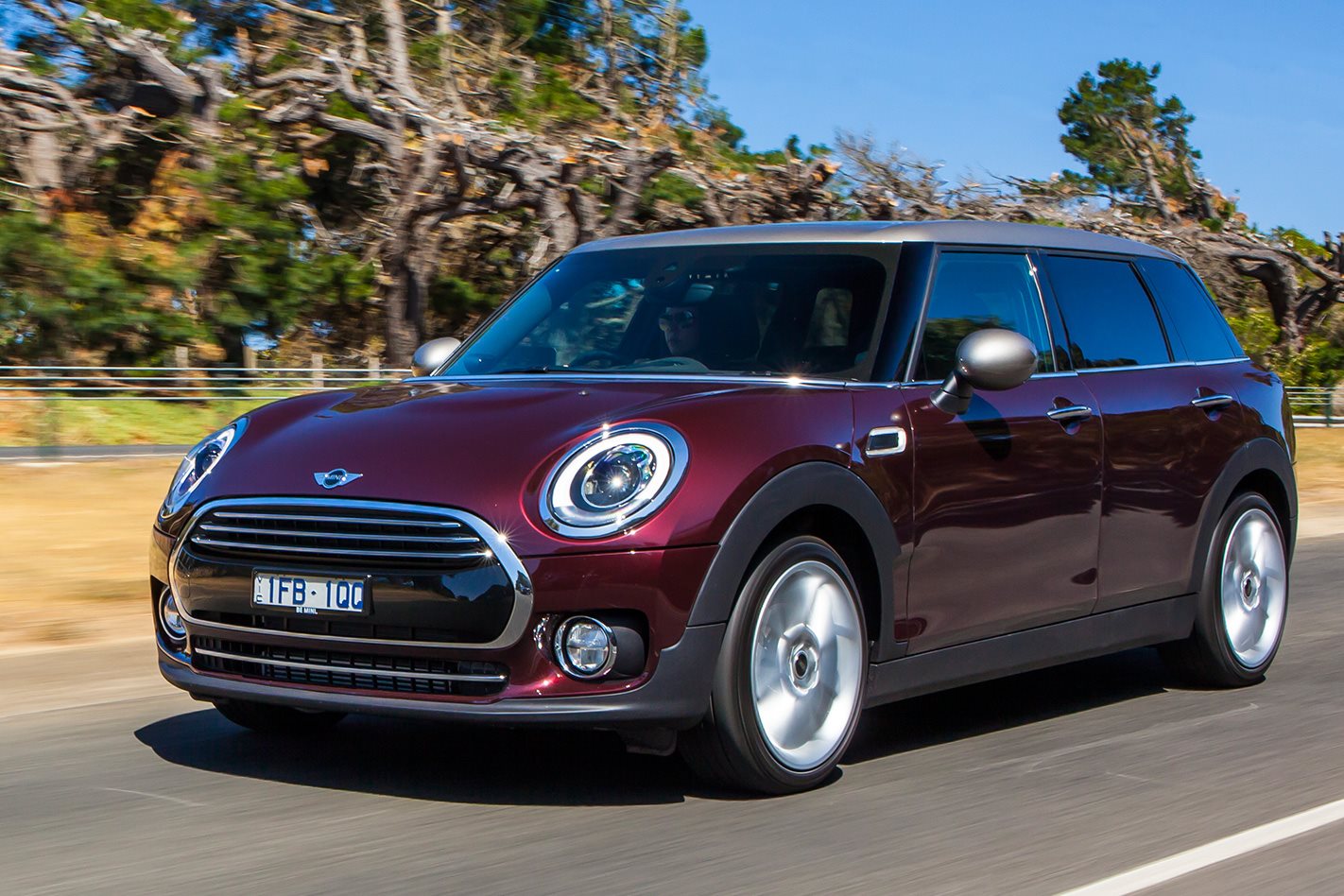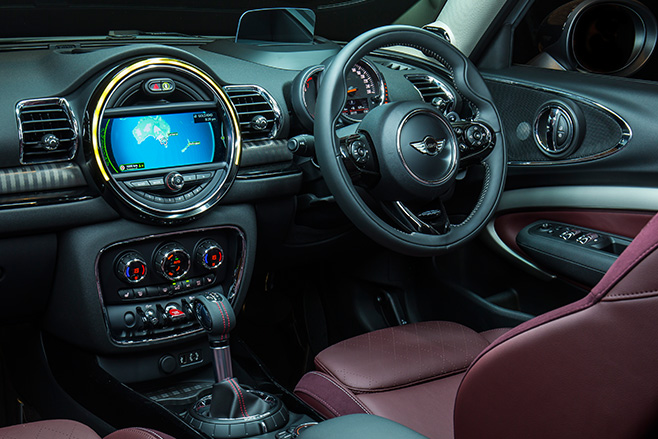
LET’S face it, the old Mini Clubman was an oddball. A cool one, yes, but it was cramped inside and had a questionable extra side door that opened into traffic.
The all-new Clubman is much more conventional. Longer, wider and better packaged, it now boasts six doors – four conventional openings and two spring-loaded portals at the rear.
Riding on the same architecture (and 2670mm wheelbase) as BMW’s 2 Series Active Tourer, the new Clubman measures 270mm longer and 90mm wider than a five-door Mini hatch.

Outside there’s Mini’s puffy new family face and striking horizontal taillights, while the typically Mini-funky interior has a few dashes of Clubman uniqueness. As ever, a large dial-like central screen dominates, but there are new square air vents, plenty of standard equipment (reverse camera, rear parking sensors, cruise control and Bluetooth) and a different wrap-around dash design. There’s also an armoury of safety systems – some optional – like forward collision warning, radar cruise and high-beam assist.
But Mini’s penchant for outlandish design remains, as does its use of hard plastics, meaning Clubman’s cabin still lacks a genuinely premium feel.
Engine-wise, the $34,900 Cooper uses Mini’s lovely 100kW/220Nm three-pot turbo paired to a six-speed auto as standard. A six-speed manual is a no-cost option.

A more sporting 141kW/280Nm 2.0-litre turbo four powers the $42,900 Cooper S, which, when mated to the standard eight-speed automatic, barks its way from 0-100km/h two seconds quicker than the base Mini Cooper (7.1sec).
But is the Clubman, as Mini claims, practical enough for a young family? Well, kind of. The rear seats are high and lack under-thigh support, and while the 360-litre boot is decent, it’s on the small side for this class. But Mini hasn’t wasted the Clubman’s extra space; it really is roomy inside. Two six-foot adults are easily accommodated in the rear pews.
And don’t fret that Mini has compromised the Clubman’s handling. All of the usual Mini character traits are there. The steering is sharp and the front axle is quick to turn in. While the Clubman isn’t as responsive as a Mini hatch, its longer wheelbase gives it a more planted feel when driven hard. Downsides are the steering, which is artificial and springy off-centre, and an overly firm and unsettled ride that puts adaptive dampers ($910) at the top of the must-have options list.

Still, there’s no denying the new Clubman’s appeal. It feels more grown up, like the regular Mini’s older, more mature sibling, and now has the space, packaging and handling to steal a swag of sales.
WORKIN’ IT
A hardcore JCW version of the Clubman is being developed to rival the likes of the Ford Focus RS and Volkswagen Golf R, tipped from within Mini Oz to arrive late 2016. Power is likely to come from an upgraded version of the Mini Cooper S’s 2.0-litre donk that could produce as much as 220kW. Mini is also toying with the idea of all-wheel drive to match the Clubman’s competition. JCW versions of the Paceman and Countryman both utilise Mini’s ‘ALL4’ AWD system.
This article was originally published in Wheels February 2016.
Click here to read the full range review of the Mini Cooper Clubman.




